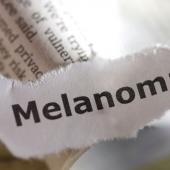Many skin conditions can seem very similar in appearance. A flaky rash can be eczema or dandruff or ringworm or psoriasis or even skin cancer. Another difficulty is that patients sometimes share a previous diagnosis that's incorrect.
Dermatology, then, is a challenging area, which is why we thought it would be helpful to highlight some skin conditions that are most commonly misdiagnosed and how to get your diagnosis right.
We've invited Dr Michael Traub ND, FBNO, Dr Vivian Shi MD, and Dr Peter Lio MD to take us through five tricky diagnoses.
Key Take-Aways
Why Is Dermatology So Challenging?
People are looking for healthier, more holistic approaches to both health and disease. And yet, most conventionally trained physicians and naturopathic doctors do not have a good foundation in dermatology. It's one of those specialties that get little recognition in the curriculum. In particular, there is really a lack of educational exposure to the variety of skin types and skin colors.
Contact Dermatitis
Contact dermatitis is an allergic or irritant reaction that causes a painful or itchy skin rash. You get contact dermatitis from coming into contact with an allergen (like poison ivy) or an irritant (like a chemical). Chemicals, for example, can cause rashes on the face and on the eyelids. Many cases of contact dermatitis can be easily confused with atopic dermatitis.
Once that skin barrier is damaged, then we get over-sensitized to other allergies in the environment. So an irritant contact dermatitis can precede allergic contact dermatitis, as can eczema, if atopic dermatitis is an underlying issue, that can make people more susceptible.
Tinea Corporis Ringworm
Tinea corporis is a rash caused by a fungal infection. It's usually a red, itchy, circular rash with clearer skin in the middle. Ringworm gets its name because of its appearance. No worm is involved. Patients who often have toenail fungus, which is known as the source of a fungal infection, will often have ringworm. It’s also prevalent in people who tend to have a weakened immune function.
Atopic Dermatitis
Atopic dermatitis or atopic eczema is the most common chronic inflammatory skin condition in dermatology and it affects a huge number of people. It's probably as high as twenty percent of children in developed parts of the world and may be as high as ten percent of adults.
It's characterized by an itchy skin rash that is red and scaly. And sometimes the rash becomes open and oozy. People get better for a while, but then it flares up.
There are other connections to this condition. It affects sleep. It affects behavior, for example we see a higher rate of attention deficit disorder. There's a higher rate of anxiety and depression. There are other important allergic diseases that are associated with it. Asthma is one of the big ones. So is allergic rhinitis, hay fever, but also allergic conjunctivitis and food allergies.
Seborrheic Dermatitis
Seborrheic dermatitis is a skin condition that mainly affects the scalp. It causes scaly patches, red skin, and stubborn dandruff. Seborrheic dermatitis can also affect oily areas of the body, such as the face, sides of the nose, eyebrows, ears, eyelids, and chest.
The issue with seborrheic dermatitis is that it appears similar to psoriasis. So sometimes those two things are connected.
Perioral Dermatitis
Perioral dermatitis is a face rash where you have bumps around the mouth, but it can occur in all the orifices around the eyes and nose and even the forehead. So location is a diagnostic key. It can occur in anyone, but more commonly in young children who use topical steroids for other skin conditions such as atopic dermatitis. And 90 percent of the cases usually are in young women, especially those who use various cosmetic products that can be irritating.
Key Quote
“We are seeing a huge increase in the number of allergies. So we're thinking about this concept called the “hygiene hypothesis”; that modern life is so clean that the immune system is developing a little bit abnormally. And that's why we're seeing some crazy high numbers like up to 20% of children with atopic dermatitis. So there may be some changes from our environment, especially urban environments, that have an outsized effect on the skin.” Dr Peter Lio MD


